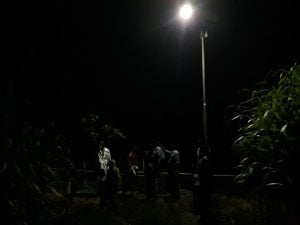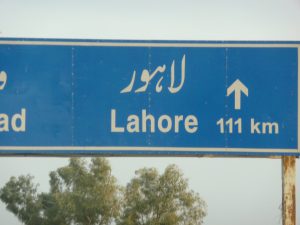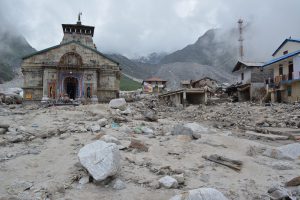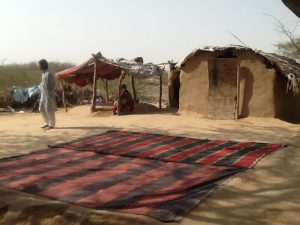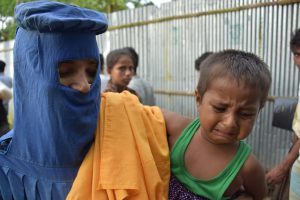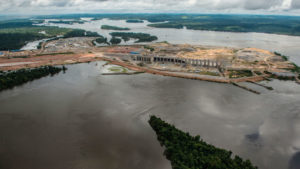The Sunkoshi river, one of seven tributaries to the Koshi, takes on the title of “the sorrow of Bihar” when it crosses the border into India. But the sorrows of the river begin far before it leaves Nepali territory. For fisherfolk living on the banks of the Sunkoshi in Dapkha village, 100 kilometres south-east of Kathmandu, the Koshi has become increasingly unreliable.
“The flow in the river has declined considerably, and the water level is falling rapidly,” says Sammer Majhi, a recently elected ward member of the village in Ramechhap district. Residents, who belong to one of the most marginalised communities in the country, tried everything they could to change the course of the river and irrigate a few hectares of the barren fields – but had no success.

The signs of drought are ominous. “When a drop of water falls on the ground during the day, it disappears within a few seconds,” says Majhi, as he sprinkles some water on the heated earth.
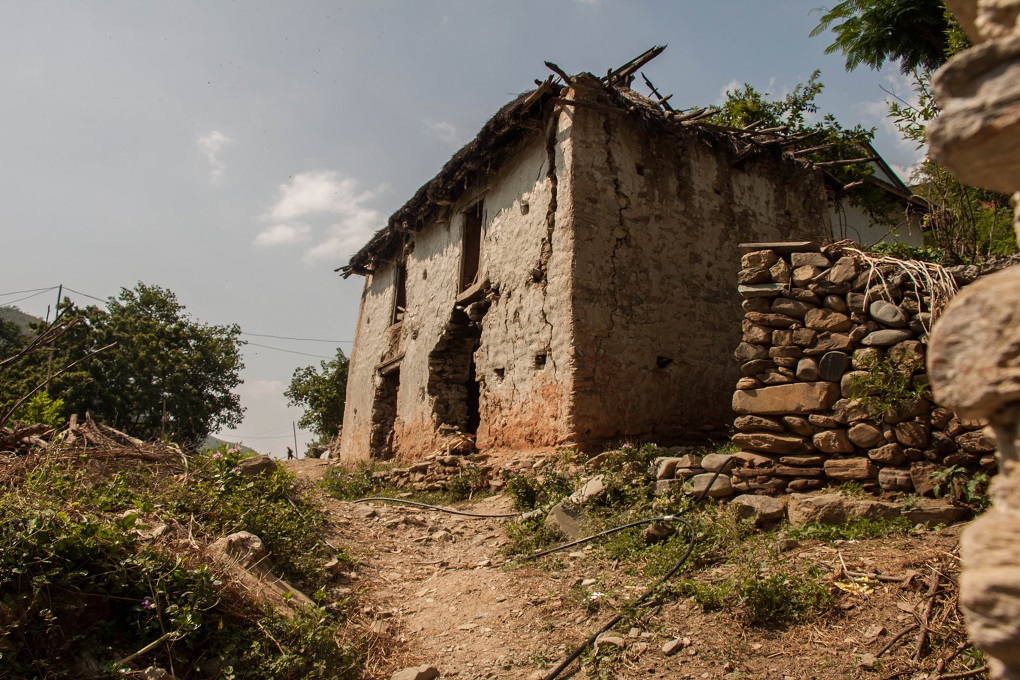
34-year-old Brinda Maji moved to the village a few years ago. “At my home in Ghyalchowk, Gorkha, we just had to plant seeds and things grew without much attention. But when I came here, I was left wondering what was wrong with the soil,” she says.
A solution looked impossible. A few years ago, the government provided a diesel-run water pump which helped to irrigate the fields for a few months. “But the pump stopped working and the person we called to repair it, ran away with it. Back then, going to Kathmandu would take at least two to three days, so it was difficult to operate the pump, which was not environment-friendly,” says Majhi.

“My father and I were heading home to Dharan when we saw a beautiful piece of land on the banks of the Sunkoshi that was left barren,” remembers 22-year-old Paras Katuwal, the CEO of Nepal Thopa Sinchai. Paras’ father, Khojraj, had worked in Israel – a country famed for using every drop of water – and knew instantly what needed to be done.
A well was dug on the banks of the Sunkoshi to use the alluvial aquifer of the area. A solar pump lifted the water up the slope and into a cement tank that sits behind the village. Pipes were laid on the fields and sprinklers fitted on land that would be used to grow vegetables. When water started flowing from the sprinklers, the villagers could not believe it.
The non-conventional irrigation project was started by the Nepal government in 2003. The aim was to promote innovative irrigation technology among farmers in under-irrigated areas and areas deemed ‘non-irrigable’ due to high development costs, or due to a lack of water for conventional irrigation schemes. The project also aimed to reduce poverty by promoting high value crops such as vegetables, herbs and fruits by using drip and sprinkler irrigation, treadle pumps, low cost water storage, rainwater harvesting and water-lifting using renewable energy. As of last year, 316 projects have been implemented across Nepal, irrigating more than 3,500 hectares of land that were previously considered non-irrigable.

“We’ve seen that the plants take in most of the water and nutrients at night. That way, the water does not get wasted,” says Majhi. “I am growing cabbages, cauliflowers, squash, pumpkins … sometimes I even lose count of what I am growing.”
“Along with the irrigation facility, we were trained by the district agriculture office on growing vegetables. We sell them to the nearby market, but we can’t meet the demand,” says Brinda Majhi.
Earlier the fisherfolk would earn less than NPR 12,000 (USD 115) per year selling fish, but now they are earning more than NPR 300,000 (USD 2,800) by selling vegetables, which is USD 500 more than Nepal’s per capita income. With so much money coming into the village, people have started a cooperative to save a portion of their income. The savings are important as they try to re-build the houses they lost in the 2015 earthquake.
As the community celebrated Dashain – Nepal’s biggest festival – this year they also welcomed the first power lines to the village, which have encouraged them to aim higher.
“We are doing well with the vegetables, but there’s good demand for maize here and we want to capitalise on it,” says Sammer Majhi. “We want to use electricity-powered pumps to irrigate our fields to grow maize,” he says.
While Majhi and his villagers celebrate, people from other settlements higher in the hills look on with awe. They also want their villages to rise out of poverty.
![<p>Solar panels have brought the power to irrigate the fields of Dapkha [image by: Abhaya Raj Joshi]</p>](https://dialogue.earth/content/uploads/2017/10/dapkha-solar-panel-1-scaled.jpg)


